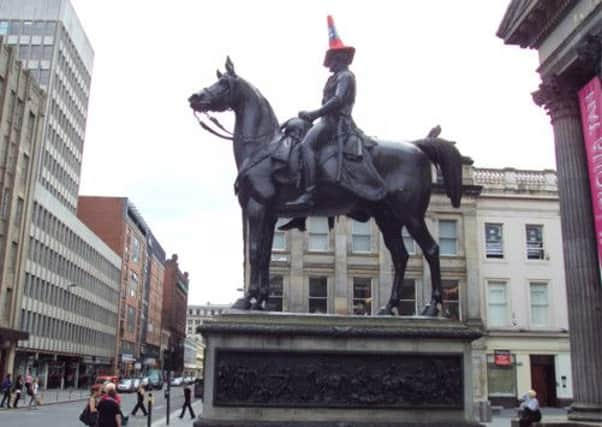Glasgow cone-cedes over Wellington statue


The sight of the Duke of Wellington statue in the city centre sporting a traffic cone on his head has long been an image synonymous with not only Glasgow but also the Glaswegian sense of humour.
The city council had been intent on revamping the monument, which sits in front of the Gallery of Modern Art in Royal Exchange Square, by raising the height of its plinth in an attempt to “reduce the incidence of vandalism”.
Advertisement
Hide AdAdvertisement
Hide AdBut last night, as a public outcry against the plan emerged on social media sites, the local authority was on the verge of ditching the planning application that was due to be heard today.
A council source said that the city leader Gordon Matheson had been infuriated by the language used in the application which referred to the cone as a “depressing image” of the city, and that it had “defaced” the monument.
“The language in the report was considered to be really inappropriate. Gordon Matheson was not happy with the references to vandalism as a result the report is going to be pulled,” the source said.
They added that while it was likely plans to upgrade the statue would be re-introduced at a later date, it would not focus on making it inaccessible to people.
The cone’s presence has become so common that in 2011 the Lonely Planet guide placed it in a top ten of the most bizarre monuments on Earth, alongside the Rocky Balboa statue in Serbia.
Council officials say it costs £100 every time they have to remove a cone and say one is added to the statue an average of 100 times a year – meaning the removal costs the council an estimated £10,000 a year.
The work would have cost an estimated £65,000, £10,000 of which was to be provided by Historic Scotland, which has previously warned against the practice.
People poked fun at the council’s U-turn. One wrote on Twitter: “Apparently Glasgow City Council are withdrawing their plinth raising, cone thwarting plan. Guess they’ve cone-ceded they were wrong..!”
READ MORE